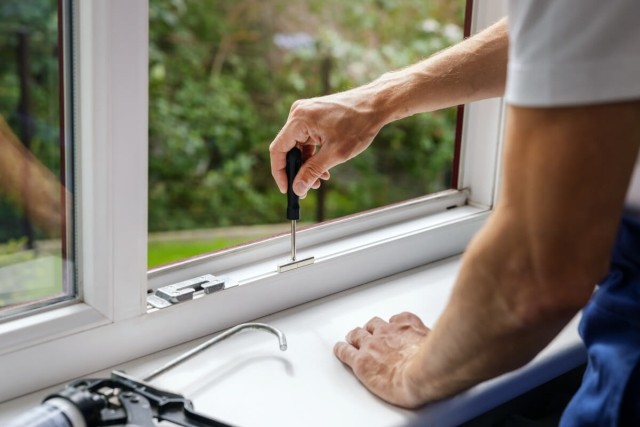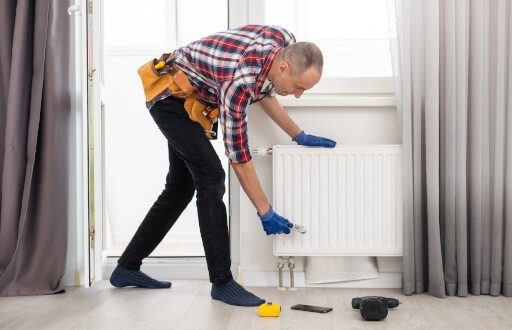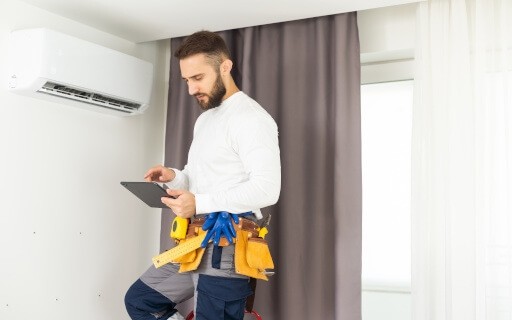As the landlord or property manager, it’s important to stay on top of maintenance issues to ensure your rental property stays habitable. This is referred to as preventive maintenance, and its purpose is to catch minor issues before they grow into major ones. Common preventive maintenance tasks include:
- Servicing the HVAC
- Pest control
- Fixing leaks and plumbing issues
- Inspecting the roof
- Cleaning the gutters
- Patching cracks, holes, dents, etc. in drywall
- Painting
- Flushing the water heater
- Checking smoke and carbon monoxide detectors
- Repairing or replacing appliances
- Maintaining lawn and landscape
- Cleaning fireplace and chimney
Although there is a long checklist of what to inspect on the interior and exterior of your property, you may not have the time to get to everything, especially if your rental unit is occupied. When you can’t get to everything on your maintenance checklist right away, it’s time to prioritize. Here are our top five preventative maintenance tasks to complete on your next inspection.
1. Gutter Maintenance
Water runoff around the foundation of your rental can undermine the foundation and cause settling. This can also create moist soil conditions that attract termites and other pests. A well-designed gutter system directs runoff from the roof safely away from the foundation, but not if the gutters are blocked with debris. By properly cleaning gutters, you’ll avoid damage to the siding and foundation of your rental from gutter overflow.
Install gutter guards
Most gutter guards can help keep leaves and large twigs out of your gutters. Depending on the type you have, you may still have to inspect the gutters for silt, conifer needles, and other smaller debris. Don’t forget to check the downspout openings where silt and debris tend to accumulate.
2. Check the Dryer
If you provide a washer and dryer for tenants, then you should be aware that dryers cause approximately 2,900 fires each year, and 34% of them are due to poor maintenance. The main culprit is lint buildup, and that most often occurs in the vent ducts. If you do not provide a dryer, but your tenant moved in their own, we recommend passing this information along to them to protect them, their belongings, and your investment. Proper dryer maintenance will also ensure efficient operation. Clothes will dry more quickly, therefore saving money on the next utility bill.
To check the dryer, you need to turn it on, feel for a steady stream of warm air coming from the outdoor vent opening, and note whether the flap over the vent opening is moving (it should be). If the flap isn’t moving, you need to remove the vent cap, vacuum out the vent, disconnect the vent from the dryer, and clean out the lint you find there.
3. Service the Septic System
Septic experts recommend pumping the septic tank every five years, but many homeowners let it go for longer than that (they shouldn’t). The tank will develop a buildup of sludge at the bottom, as well as a layer of scum at the top that can clog your drain field, especially if it’s full of grease and other insoluble materials. Regular plumbing can help control this layer by reestablishing a healthy digestive balance in the tank.
Remind tenants of the pump alarm
If your tank has a transfer pump, instruct your tenants to keep a watchful eye on the visual alarm. Quick response to a signal can also prevent a backup and expensive clean up. The pump may need to be serviced, but the problem is often something as simple as a tripped breaker.
4. HVAC Maintenance
HVAC (heating, ventilation, and air conditioning) experts recommend changing heating and cooling filters every six to 12 months. Cleaning or changing air filters is vital for air quality and for the performance of the HVAC system. Although you can clean the filters, it’s better to just replace them. Filters are inexpensive and filter maintenance can help lower the energy bill as well.
5. Inspect and Clean the Chimney and Fireplace
If your rental has a fireplace, you should have the chimney inspected once a year. Soot deposits should be removed if they are thicker than 1/8 thick.
Fireplace maintenance is a safety issue; creosote buildup increases the likelihood that hot embers will fly from the chimney during a fire. It’s also an energy issue because a clean chimney produces a hotter fire. Lastly, it’s a maintenance issue. Sooty air blackens the stones around the hearth and dulls the walls of the room where the fireplace resides. There is much less blowback if the chimney is clean.
How Often to Perform Preventive Maintenance
Dealing with maintenance requests can often feel like a juggling act. You’ve got tenants reaching out, schedules to coordinate, and service professionals to contact. It can get hectic, but Apartments.com has the solution. With our online maintenance platform, tenants can submit maintenance requests online. We notify you when you have a request, and you can easily update your tenants as the repair progresses. You can even attach receipts, upload notes, and track expenses for the repairs. You and your tenants can even share images and videos. Keeping everything in one place makes it easy to keep track of repairs, how often something is requiring repair, and how future repairs might impact your budget.
While routine inspections are a must, it’s equally important to maintain the landlord-tenant relationship, especially if you want to maintain long-term tenants and reduce tenant turnover. This means that if your rental property is occupied, you must give tenants proper notice before entering the property to perform routine inspections and preventive maintenance. This is to protect the tenant’s privacy, as well as their right to quiet enjoyment. If you excessively inspect the property, especially without proper notice, you may be in violation of your state laws.
It’s necessary to inspect your rental property during the move-in and move-out process, but there are also seasonal, bi-yearly, and even quarterly maintenance tasks you’ll need to perform, such as changing the air filters, that may need to be addressed while your rental is tenanted. Many of these preventive maintenance tasks can be performed on a yearly basis, while others will need to checked on at least twice a year.
By completing these five preventive maintenance tasks, you’ll be able to catch any minor problems and repair them before they turn into major maintenance issues while simultaneously saving money from the cost of future repairs in the process.











